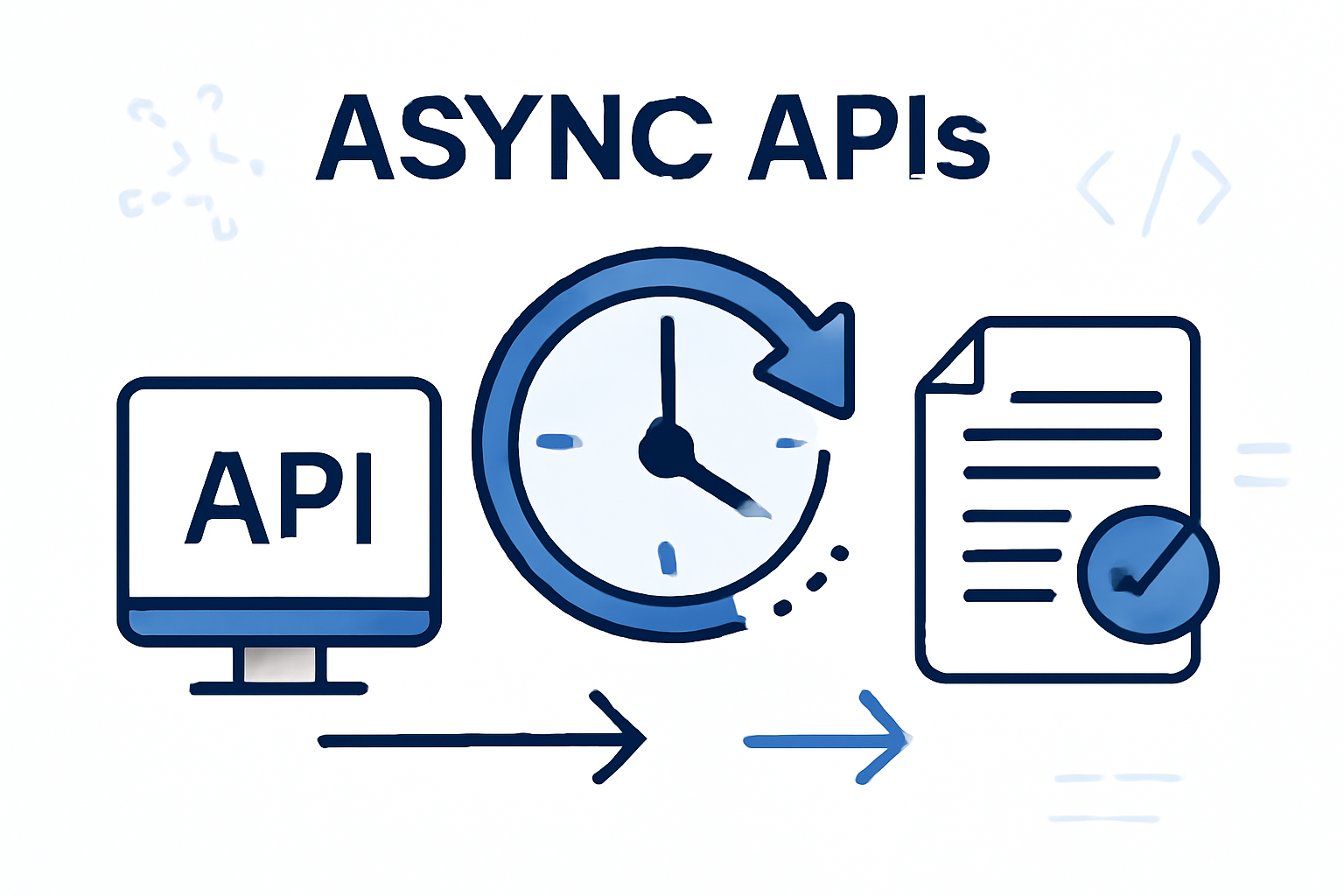Overview#
Async APIs provide a powerful mechanism for handling long-running operations without blocking client applications. These APIs enable asynchronous processing by allowing clients to submit requests that may take significant time to complete, then retrieve results later when processing is finished. This approach improves application responsiveness, scalability, and resource utilization by decoupling request submission from result retrieval.Parent Category: Root
Child Categories:
APIs in this category: Submit Request, Submit Request without Webhook, Get Status
Key Capabilities#
Main Functionality
The Async APIs enable non-blocking processing of time-intensive operations by providing endpoints for request submission and status tracking, allowing client applications to continue execution while operations complete in the background.
Request Submission
Submit long-running operations to the system without waiting for completion, receiving a request ID for future reference.
Status Monitoring
Track the progress and status of previously submitted requests using the request ID, allowing applications to check completion state at their convenience.
Result Retrieval
Obtain the final results of completed operations either through webhook notifications or by polling the status endpoint when processing is complete.
Common Use Cases#
Processing complex financial calculations or risk assessments that require significant computation time
Generating comprehensive financial reports with data from multiple sources
Integration Considerations#
Best Practices
Implement proper error handling and retry logic for both request submission and status checking
Store request IDs securely for future reference and status tracking
Consider implementing exponential backoff when polling for status to reduce unnecessary API calls
Set appropriate timeouts based on expected processing duration for different operation types
Async operations may have maximum runtime limits depending on the complexity of the request
Webhook notifications require publicly accessible endpoints to receive callbacks
Results may only be available for a limited time after processing completes
Rate limits may apply to both submission and status check endpoints
How APIs in this Category Work Together#
The Async APIs form a cohesive workflow for handling long-running operations from submission through completion. They provide flexibility in how clients interact with asynchronous processes based on their specific requirements and infrastructure.Key Integration Patterns:Submit Request + Get Status: Submit a request with webhook notification and periodically check status until completion
Submit Request without Webhook + Get Status: Submit a request without callbacks and poll the status endpoint to determine when processing is complete
Submit Request + External Systems: Integrate webhook notifications with your event processing systems for automated workflows
Batch Processing APIs: While Async APIs handle individual long-running tasks, Batch Processing APIs focus on efficiently processing multiple operations as a single unit
Webhook Management APIs: Provide configuration and management capabilities for the webhook endpoints that receive notifications from Async API operations
Resource Management APIs: Often used in conjunction with Async APIs to manage the underlying resources needed for processing complex operations
